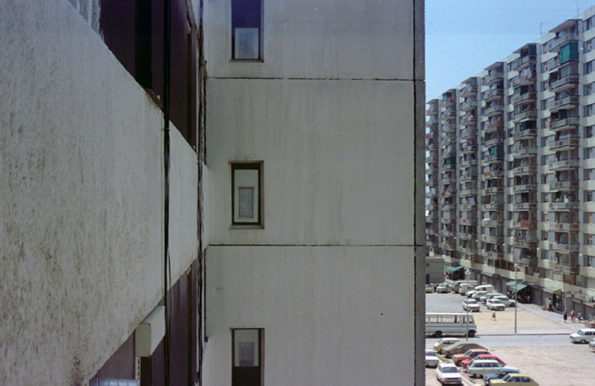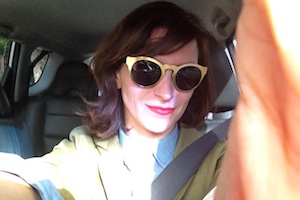Search
To search for an exact match, type the word or phrase you want in quotation marks.
A*DESK has been offering since 2002 contents about criticism and contemporary art. A*DESK has become consolidated thanks to all those who have believed in the project, all those who have followed us, debating, participating and collaborating. Many people have collaborated with A*DESK, and continue to do so. Their efforts, knowledge and belief in the project are what make it grow internationally. At A*DESK we have also generated work for over one hundred professionals in culture, from small collaborations with reviews and classes, to more prolonged and intense collaborations.
At A*DESK we believe in the need for free and universal access to culture and knowledge. We want to carry on being independent, remaining open to more ideas and opinions. If you believe in A*DESK, we need your backing to be able to continue. You can now participate in the project by supporting it. You can choose how much you want to contribute to the project.
You can decide how much you want to bring to the project.

Sound emerges from the collision between molecules that create a vibratory movement. It can only be produced in a substantial context, never in the void. In a liquid medium – to be specific, in water – sound is produced more quickly and with less loss of energy than in air.
On my successive visits to La Virreina, I feel that I am swimming under water, submerging myself, thinking from a liquid state that doesn’t seem to correspond to the idea of dryness persistently present in the images in the exhibition entitled Machines for Living. Flamenco and Architecture in the Occupation and Vacating of Spaces: modern architectural structures, bare and futile, utopian drift maps, photographic scenes of marginalisation, theatres with austere set designs and gestures. Yet in spite of all this, the aridity of the images is perceived to be saturated by the reverberation of the sound of flamenco.
As a starting point, the show focuses on the relationship between music and space, between that flamenco sound and architecture in order to see how the symbolic production of the imaginary caló [of Spanish gypsies] has occupied different structures. The exploration of constructive forms reveals how the resonance of a lifestyle expands more swiftly and vibrantly than outdoors and challenges the Western concept of social organisation.
The liquid medium we are speaking of is the archive that lies at the core of the Machines PH project by Pedro G. Romero, an apparatus that since 1995 has enabled him to establish – through activities of collective reflection and authorship at different levels – coincidences and relations between form and mode, between artistic practice and sociological, psychological and philosophical analysis like a huge Aby Warburg-style atlas. His work strategy thus becomes a political tool thanks to the expansion of categories and the subversion of classical systematisations.
Flamenco, deeply conceived, exceeds the notion of simple music or song. Many theoreticians and thinkers discover qualities in flamenco that define, both in its tradition and in its experimental condition, a spatial and temporal relationship that eludes our society’s preconceptions. In his lecture “Tierra y conmoción o el arte de la grieta “[1] Didi-Huberman declared that flamenco hits the ground and in this friction, artists ‘are always questioning the earth on its ability to respond to the body with reciprocated collisions’. These bodies in movement revisit their nomadic origin, that doesn’t belong to a particular place but to a transitional landscape not confined to a specific cultural territory that is therefore ‘pure endless becoming’. In another reflection forum, Giorgio Agamben[2] would say that flamenco dance isn’t an event, it’s not something that ‘takes place’, but a probability, something take place’. It’s not spatial but temporal. In his book El ojo partido[3]
himself describes gypsies as deterritorialised, on the fringes. And it is this being on the fringes that directly connects with the avant-garde stance, and grants it a political quality that allows for a new conception of ways of living. Of living more than of dwelling.
The exhibition at La Virreina sums up these elements in three essential features: social architecture, that brings together different experiences of architectural regulation of gypsy settlements; radical architecture, that presents numerous proposals made by the avant-garde, chiefly Situationist, inspired by Romany modes and culture[4]; and theatrical architecture and its developments as it flourished in the seventies in Spain thanks to a combination of tradition, innovation and avant-garde.
While they are all real, the spaces presented in the show always appear as projections. The first one, the projection of the modern development policy movement, shows an attempt at encroaching on a people that escaped the channels through which progress should take place. The second one, the artistic projection, adopts some of its modes and strategies – nomadism, repudiation of work, usufruct of urban space, predominance of game, delirious anomie, jargon as language, low industrial production, drift or détournement – to imagine alternative futures, virtually all of which are in the utopian sphere. Hence, both architecture and contemporary art are imaginary projections of an undervalued or mythologised culture. Last but not least, the projection created by gypsy culture itself in the spatial interstices where it ceased to exist, in the hybrid field of the lumpenproletariat. Thanks to the assimilation of experimental proposals that also escape from the norm of regulated spaces, they find their field of reflection, their form of existence, in fiction.
In each section of the exhibition we come across different forms of friction, a collision of molecules, a sound that in our cities may be diffused yet whose echo we manage to hear. To quote Teresa Lanceta, an artist who came into contact with gypsy culture in Barcelona and whose tapestries are displayed in the exhibition, ‘Flamenco unsettled me and I discovered that the exception is the rule that makes us possible.’
[1] ‘La noche española. Flamenco, vanguardia y cultura popular’ seminar. Georges Didi-Huberman, ‘Tierra y conmoción o el arte de la grieta’, http://www.pieflamenco.com/tierra-y-conmocion-o-el-arte-de-la-grieta/ (accessed 27 March 2018).
[2] ‘Flamenco. Un arte popular moderno’ seminar. Giorgio Agamben, ‘Creación de un lugar donde el baile puede ocurrir’, http://www.pieflamenco.com/creacion-de-un-lugar-donde-el-baile-puede-ocurrir/ (accessed 27 March 2018).
[3] Pedro G. Romero, El ojo partido: Flamenco, cultura de masas y vanguardias (Flamenco y cultura popular), Athenaica Ediciones Universitarias, Sevilla, 2016.
[4] Guy Debord spoke of gypsies as follows: ‘Capitalism runs through them yet brings no change to their way of living’. Quoted in the explanatory texts accompanying the Máquinas de vivir. Flamenco y arquitectura en la ocupación y desocupación de espacios exhibition at La Virreina – Centre de la Imatge, Barcelona.

Marta Ramos-Yzquierdo is used to change and adaptation. That is why she has has worked in the most diverse fields within the art world and the cultural management. She has lived in Paris, Granada, Madrid, Santiago de Chile, a lot of years in Sao Paulo and now in Barcelona. She talks a lot with artists and other beings to seek for many questions, especially about power structures, perception and ways of acting, feeling and living.
"A desk is a dangerous place from which to watch the world" (John Le Carré)